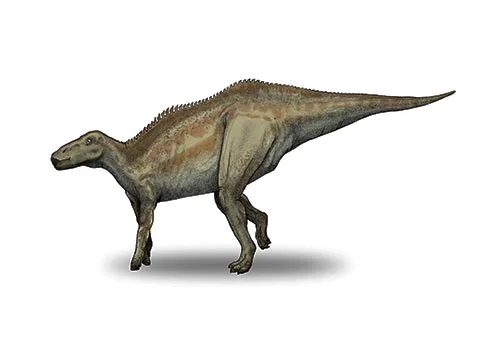Shantungosaurus (Shantung lizard)

Shan-tung-o-sore-us
Hu - 1973
Herbivore
Estimated 14 meters long
Euornithopod
S. giganteus (type)
China - Shandong Peninsula - Wangshi Formation
Late Cretaceous, 80-70 million years ago
Shantungosaurus Facts
Shantungosaurus, meaning “Shandong lizard,” is a genus of large herbivorous dinosaur that lived during the Late Cretaceous period, about 70-80 million years ago. Its fossils have been found in the Shandong province of China and it is one of the largest known hadrosaurid dinosaurs.
Shantungosaurus was a massive dinosaur that measured up to 14 meters (46 feet) in length and weighed around 12 tons. It had a long, broad beak and hundreds of tightly-packed teeth, which it used to grind tough vegetation. Its forelimbs were much shorter than its hind limbs, and its fingers were arranged in a semi-circular shape, similar to that of a horse’s hoof. This allowed Shantungosaurus to support its weight on its hind legs while standing or walking, and to use its forelimbs for grasping and pulling vegetation.
Shantungosaurus is an important dinosaur because it is one of the largest known hadrosaurid dinosaurs, and its fossils have provided valuable insights into the anatomy, behavior, and ecology of these dinosaurs. For example, studies of Shantungosaurus bones and teeth have revealed that it grew very rapidly during the first few years of its life, and that it had complex social behavior, including herding and territoriality.
Shantungosaurus is also significant because it lived in Asia during the Late Cretaceous period, when the continents of the world were starting to drift apart. Its discovery has helped scientists better understand the distribution of dinosaurs during this time and the effects of environmental changes on their evolution and extinction.
Overall, Shantungosaurus is a fascinating dinosaur that has contributed to our understanding of the diversity, anatomy, behavior, and ecology of the hadrosaurid dinosaurs, as well as the broader history of life on Earth during the Late Cretaceous period.



